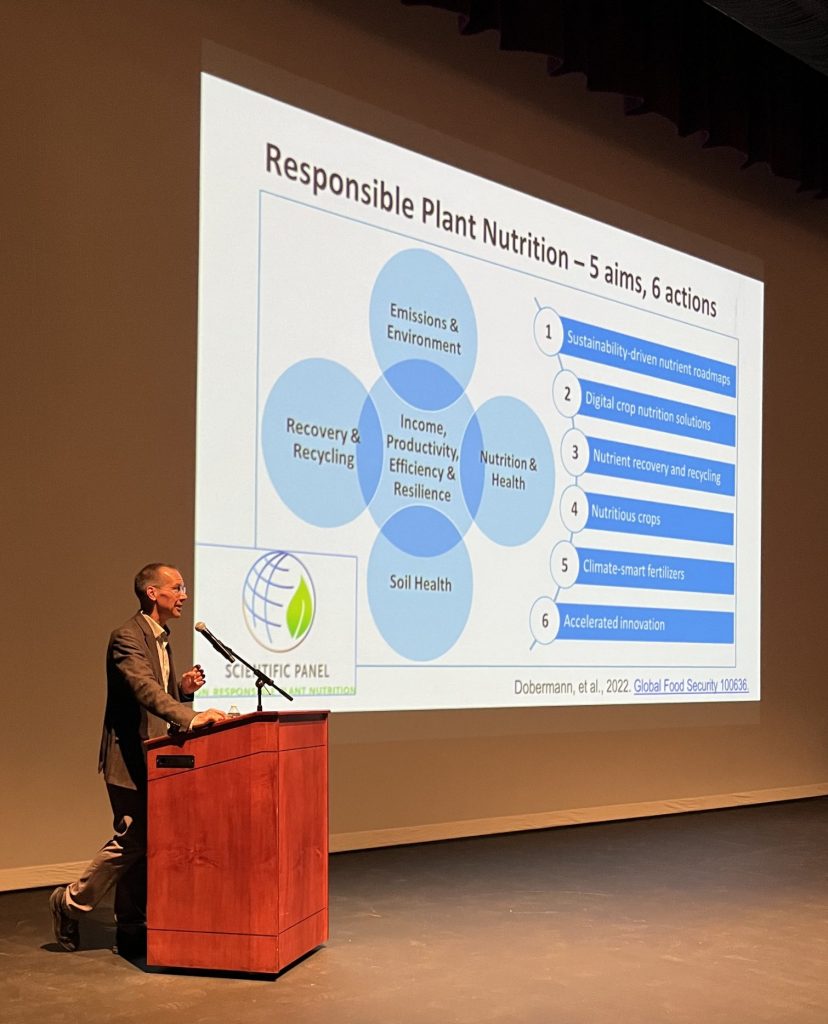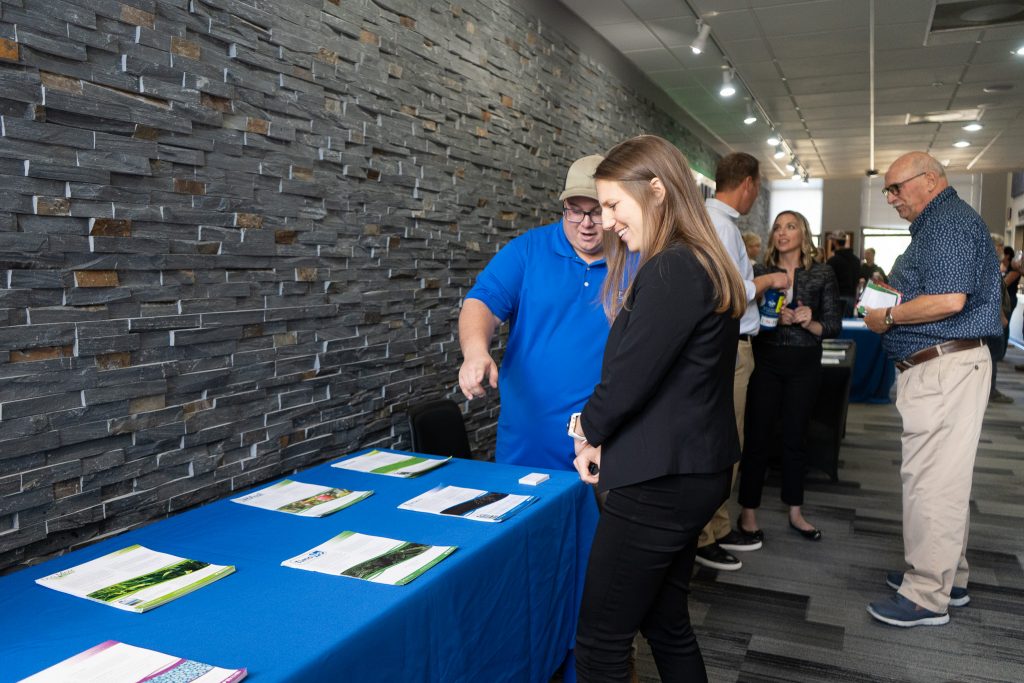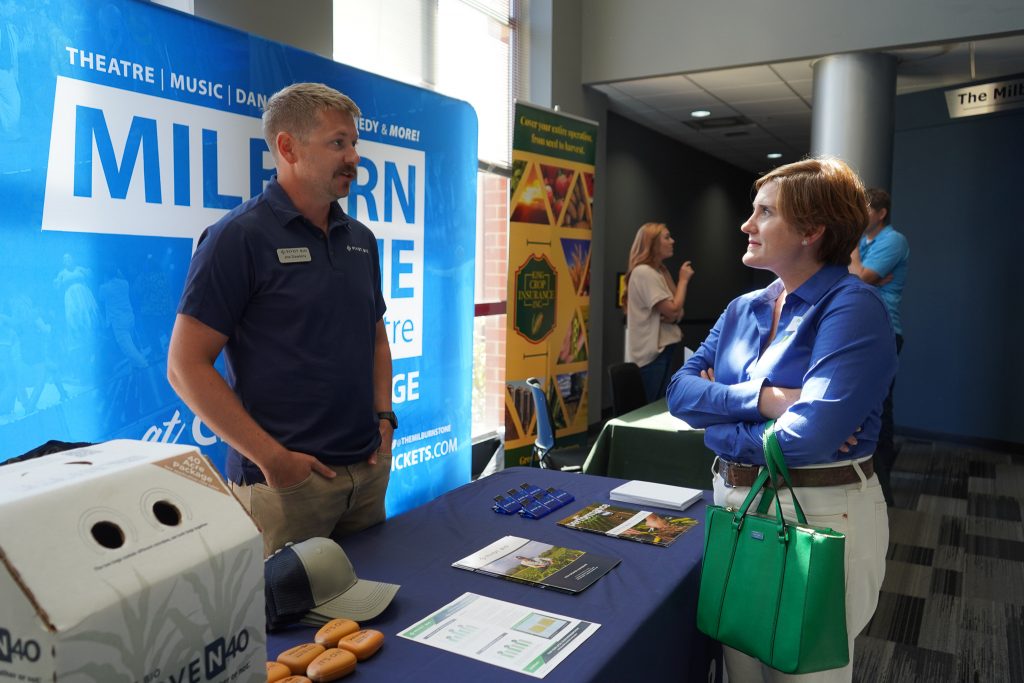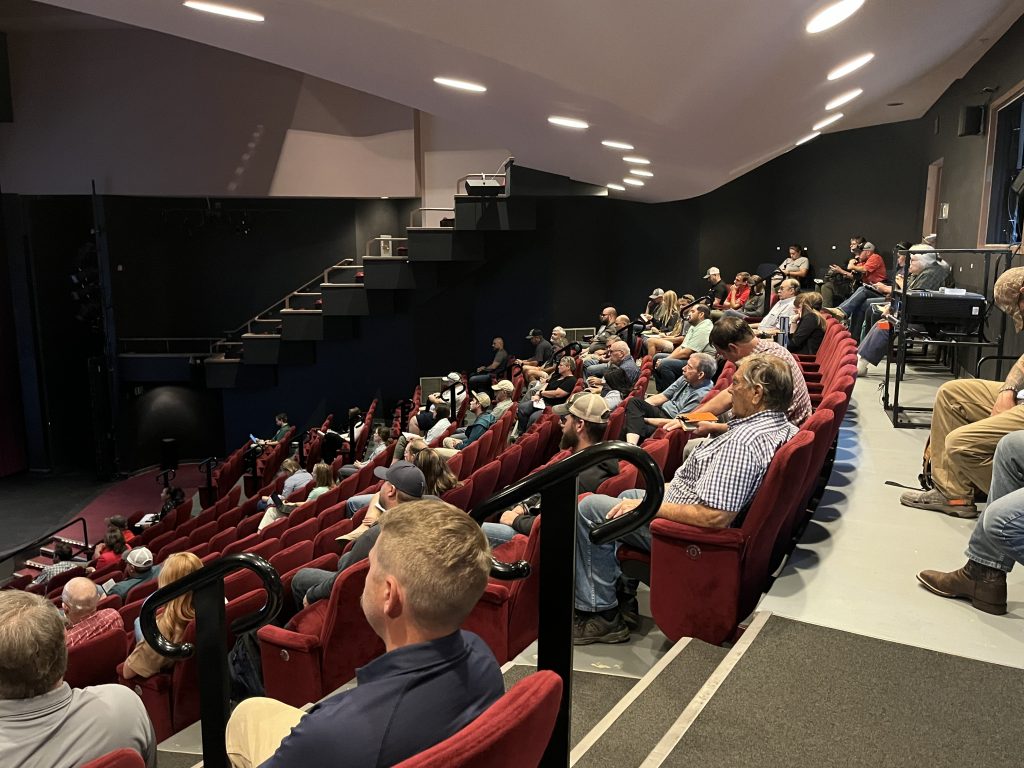Learning and Researching, The Mid-Atlantic Agriculture Region Is On Top Of It
Elkton, Maryland (September 29, 2023) – The Mid-Atlantic 4R Nutrient Stewardship Association held it’s first-ever 4R Symposium on August 31st at Cecil Community College in partnership with the Delaware Maryland 4R Alliance and Pennsylvania 4R Alliances. The symposium featured four great presentations showcasing fertilizer efficiency and 4R research (Right Source, Rate, Time, and Placement of fertilizer applications).

Dr. Tom Bruulsema, Chief Scientists with Plant Nutrition Canada drove 10 hours to join the first-ever 4R Symposium to present on “Nitrogen Use Efficiency in Responsible Plant Nutrition.” Responsible plant nutrition includes five aims and six actions. Nitrogen use efficiency (NUE) is one of a number of sustainability indicators. NUE can be impacted by conservation practices and crop management. Farmers most typically recognize the partial factor productivity (PFP) from which is yield divided by fertilizer. The typical value of PFP in corn is 40 to 80 lbs/lb. It has been proven that when you improve NUE, you are applying less Nitrogen, so the upstream cost is reduced and impact of potential loss is reduced. Check off Dr. Bruulsema’s full presentation online here.
Eric Rosenbaum, Co-Executive Director of Pennsylvania 4R Alliance presented Split Nitrogen Results from 2021 and 2022, funded by the Mid-Atlantic 4R Nutrient Stewardship Association with Chesapeake Bay Stewardship Funds awarded by the National Fish and Wildlife Foundation Innovative Nutrient and Sediment Reduction grants. Farmers in the Chesapeake Bay Watershed added a split of nitrogen to their management practices using cost-share. In theory the same total pounds of nitrogen were applied across each field, but a control strip was implemented and one additional application was made to the majority of the field. In 2021, through 26 farms and 3,595 acres Pennsylvania averaged 17.6 bu/A yield increase which equated to a $88 per acre return on investment, while Maryland averaged a 19.2 bu/A yield increase which equated to $96 per acre return on investment. In 2022, there were 21 farms with 4,213 acres enrolled. Pennsylvania saw a 13 bu/A increase and Delaware/Maryland saw a 4.3 bu/A increase. With two years of on-farm trials, we have seen a revenue increase with a decrease in fertilizer cost, increase in nitrogen use efficiency and phosphorus removal. This cost-share was available in 2023 and results were forthcoming. There is funding available for the 2024 corn crop season if you are interested please contact our team. In depth information can be found online here.
Dr. Nicole Fiorellino, the Assistant Professor and Extension Agronomist for the University of Maryland covered “Utilizing On-Farm Trials to Evaluate 4R Practices and Beyond.” An on-farm trial is any kind of research that is executed on a private farm or in partnership with a farmer. This differs from a research education center by having farmer involvement, utilizing farmer equipment creating commercial sized plots and requiring fewer treatments. In theory this allows for more variability, timing challenges, as well as a greater likelihood of lost data; however, this can also provide more realistic data for farmers. For 2023, the Maryland Grain Producers Utilization Board funded an on-farm trials coordinator jump-start the Maryland on-farm trials program. The goal is to gather data across Maryland’s geographical region, produce data more rapidly to answer producer questions, and test claims of commercially-available products. Another value to these trials is to allow farmers first hand to see results and possibly make management decisions changes. In relation to 4R practices, farmers are able to be involved or network with farmers involved as most research generally supports the benefits of 4R practices. Learn more about University of Maryland’s on-farm trials work here. The full presentation is available here.
To wrap-up the day. Dr. Leanna Nigon, Director of Agronomy and Research with The Fertilizer Institute joined us to talk about “Integrated Enhanced Efficiency Fertilizers into 4R Practices.” The goal of 4R Nutrient Stewardship is to improve the environmental, economic, and social outcomes, which ties into Enhanced Efficiency Fertilizers (EEFs). EEFs are fertilizer sources that are targeted at making nutrients available at the right time, when the crop needs them. They are used to slow or control the release of Nitrogen from day to weeks or months or used to slow down the conversion to nitrate from days to weeks. The benefits include reducing nitrogen loss, improving nitrogen use efficiency, regulating the nitrogen supply in the soil, improving crop health, while increasing production, profitability, and being environmentally sound. You can view the full PowerPoint presentation online here.
Thank you to all those who came for the first-ever symposium and to all of our sponsors. The 4R partnership was honored to have high quality presentations in the Chesapeake Bay Watershed as we continue to ensure that every nutrient application is consistent with the 4Rs – the right source, applied at the right rate, at the right time, in the right place. All with the focus on increasing implementation to benefit the economic, environmental, and social well-being of our region and our farmers.
###
Thank you to our 2023 Symposium Sponsors!
- Decision Ag Solutions
- Growmark FS
- Harry R. Hughes Center for Agro-Ecology
- Horizon Farm Credit
- Keith Campbell Foundaton
- King Crop Insurance
- MARBIDCO
- Maryland Department of Agriculture
- Nagel Crop Insurance
- Pivot Bio
- Timac Agro
- Windsor Group LLC
Major Funding Provided By:
- Corteva Agriscience
- Environmental Tillage Systems
- Mosaic
- National Fish and Wildlife Foundation – Chesapeake Bay Stewardship Fund
- The Fertilizer Institute
- Yara


